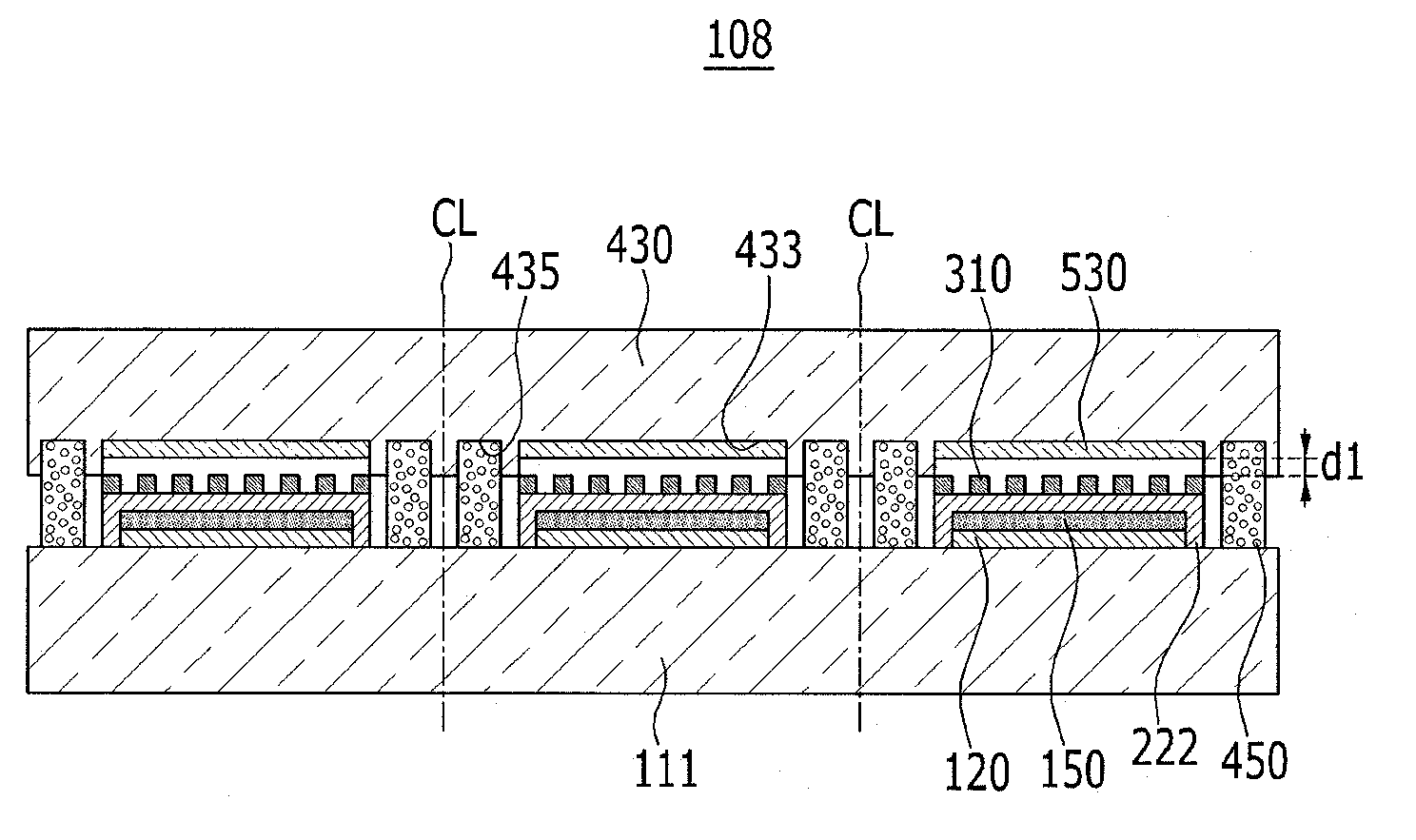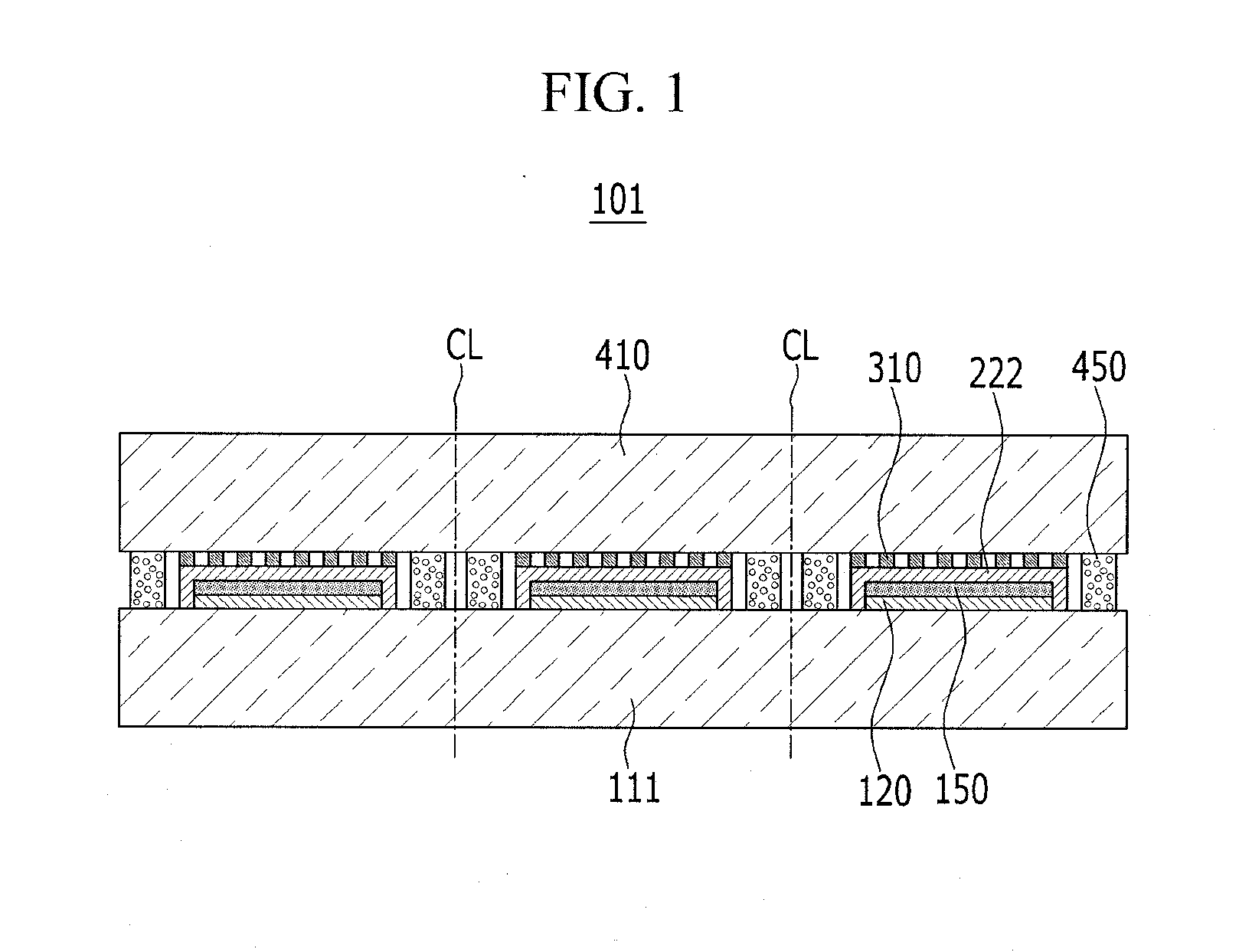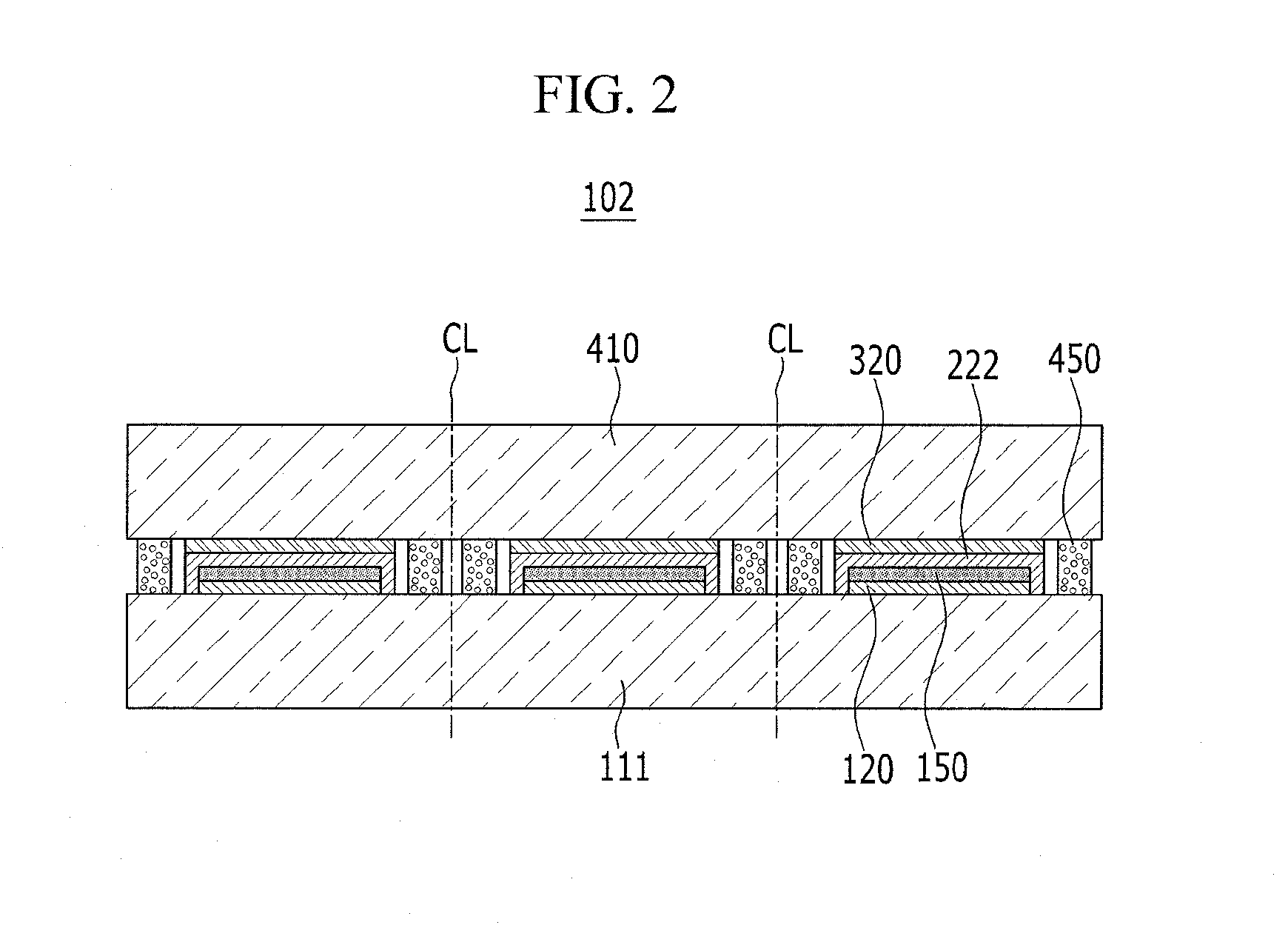Organic light emitting diode display
a light-emitting diode and organic technology, applied in the field of organic light-emitting diodes (oled) displays, can solve the problems of reducing stability, reducing durability, and deteriorating quality of organic light-emitting diodes, so as to effectively add an element such as a touch sensor, improve durability and vapor transmission resistance, effect of suppressing external light reflection
- Summary
- Abstract
- Description
- Claims
- Application Information
AI Technical Summary
Benefits of technology
Problems solved by technology
Method used
Image
Examples
first embodiment
[0038]Referring to FIG. 1, an organic light emitting diode (OLED) display 101 will now be described.
[0039]As shown in FIG. 1, the organic light emitting diode (OLED) display 101 includes a display substrate 111, a driving circuit 120, an organic light emitting element 150, a thin film encapsulation layer 222, a light blocking pattern layer 310, a sealant 450, and an encapsulation member 410.
[0040]The display substrate 111 is formed with a transparent insulation substrate made of glass, quartz, or ceramic.
[0041]The driving circuit 120 is formed on the display substrate 111. The driving circuit 120 includes a plurality of thin film transistors and capacitors and drives the organic light emitting element 150.
[0042]The organic light emitting element 150 is formed on the display substrate 111, and is electrically connected to the driving circuit 120. The organic light emitting element 150 outputs light in response to a driving signal provided by the driving circuit 120. In this instance...
second embodiment
[0057]A second embodiment will now be described with reference to FIG. 2.
[0058]As shown in FIG. 2, the organic light emitting diode (OLED) display 102 according to the second embodiment uses a polarizing member 320 as a member for suppressing reflection of external light.
[0059]The polarizing member 320 includes a plurality of optical films such as a polarizing plate and a phase delay plate, and it can have various types of configurations known to a person skilled in the art. The polarizing member 320 can suppress the reflection of the external light more effectively than the light blocking pattern layer 310 used in the first embodiment.
[0060]In the second embodiment, the polarizing member 320 is protected by using the encapsulation member 410 so that the damage and contamination of the polarizing member 320 can be minimized in an efficient manner.
[0061]By the above-described configuration, the organic light emitting diode (OLED) display 102 according to the second embodiment can eff...
third embodiment
[0062]Referring to FIG. 3, a third embodiment will now be described.
[0063]As shown in FIG. 3, the organic light emitting diode (OLED) display 103 according to the third embodiment uses a film made of a resin material for the encapsulation member 420. For example, the encapsulation member 420 can be a polyimide (PI) film with excellent heat resistance, chemical resistance, and insulation.
[0064]The thin film encapsulation layer 222 is formed in the space that is sealed by the sealant 450 and the encapsulation member 420. Thus, the encapsulation member 420 can be made with a resin-based film even though it has lower vapor transmission resistance than a glass substrate. That is, the encapsulation member 420 can be formed with polyimide that is relatively easy to use in manufacture and that is inexpensive. Also, when the resin-type film is used for the encapsulation member 420, the thickness of the organic light emitting diode (OLED) display 103 can be reduced.
[0065]Further, the bonding ...
PUM
 Login to View More
Login to View More Abstract
Description
Claims
Application Information
 Login to View More
Login to View More - R&D
- Intellectual Property
- Life Sciences
- Materials
- Tech Scout
- Unparalleled Data Quality
- Higher Quality Content
- 60% Fewer Hallucinations
Browse by: Latest US Patents, China's latest patents, Technical Efficacy Thesaurus, Application Domain, Technology Topic, Popular Technical Reports.
© 2025 PatSnap. All rights reserved.Legal|Privacy policy|Modern Slavery Act Transparency Statement|Sitemap|About US| Contact US: help@patsnap.com



